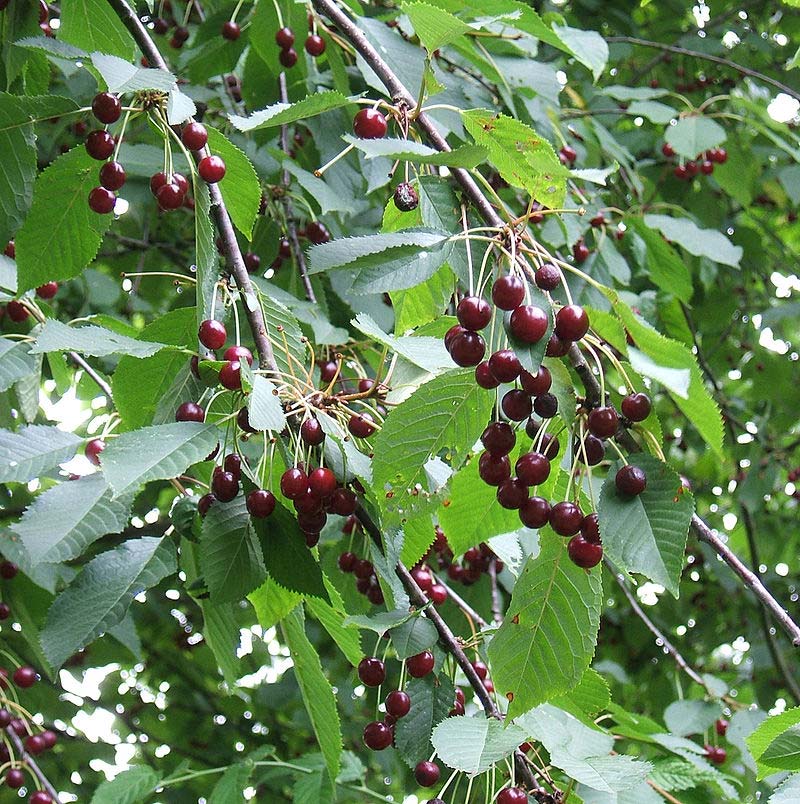
Quick Facts
- Plant Type: Large, conical to rounded
- Foliage type: Deciduous
- Tree height: 30 to 40 feet
- Tree width/spread: 30 to 40 feet, rarely to 60 feet
- Hardiness: USDA Zones 3 to 8
- Flower Color: 1-inch white flowers in the spring
- Sun/light exposure: Full sun
- Water requirements: Moist, well-drained soil, drought sensitive
- Seasonal Interest: In the fall leaves turn vibrant yellow, orange, red and purple
Wild Cherry (Prunus avium)
The European and Asian Mizzard Cherry has been cultivated in the United States since colonial times. Because of the large size of the tree, it was often used in parkland, and less often as a street or garden tree.
Fragrant white flowers appear singly or in clusters in spring, slightly before the foliage emerges. These are followed by small sweet red to black cherries which ripen in early summer. Also known as the Bird Cherry, birds and squirrels love the fruit. They spread the seeds and are partly responsible for the naturalization of this tree in the United States.
Mizzen Cherry is the cherry species from which most modern sweet cherry tree cultivars are derived. Breeding edible cherries has an ancient history. The Roman writer Pliny the Elder (AD 23 – August 25, AD 79) says that seven varieties of cherry trees were known in the first century AD. Today it is estimated that the number of cherry varieties is around 200 but only a dozen of them represent almost all current cherry production.
The bark is a deep reddish-brown, shiny and peeling with prominent horizontal lines. In autumn, the leaves turn orange, pink or red before falling. Mizzard Cherry wood is used to make decorative veneers and furniture. The wood is hard, strong and honey-colored, and can be polished to a shiny brown color.
Mizzen Cherry is not a long-lived species as it can begin to rot after 60 years.

